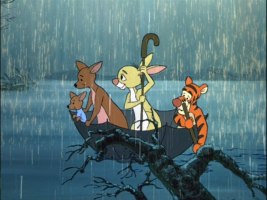The Wizard of Oz
is a colorful classic that is filled with thrills, and it’s a straight shooter
right from the start to the very end. From following the yellow brick road to
finally meeting the wizard himself, it’s a bumpy ride that I always look
forward to experiencing again.
Filmed mostly in
Technicolor—except for the opening scenes, which were shot in sepia-tinted
black and white—The Wizard of Oz has stood the test of time as a top fantasy
movie, featuring highly unusual characters. The movie is based on the
book The Wonderful Wizard of Oz by L. Frank Baum, and although it
differs a lot from the book, this movie is the best adaptation that stays close
to the original story.
The movie’s plot
follows Dorothy (Judy Garland) and her dog Toto, who get caught in a tornado’s
path and somehow end up in the land of Oz. In Oz, Dorothy mistakenly kills the
Wicked Witch of the East, who is the sister of the Wicked Witch of the West. Now,
the Wicked Witch of the West is after her, and Dorothy must find her way home.
The only person who can help her is the Wizard of Oz.
On her way to
see the wizard, Dorothy meets a Scarecrow with no brains, a Tin Man with no
heart, and a Lion with no courage. Together, this team heads off to see the
wizard, hoping he will fulfill all their needs.
The movie’s
production had its twists and turns. Ray Bolger was originally cast as the Tin
Man, and Buddy Ebsen was set to play the Scarecrow, but their roles were
switched later on. This switch was to the detriment of Ebsen, who had an
allergic reaction to the Tin Man’s makeup. Jack Haley was called in to take his
place.
Another thing to
note about this classic is how it deviated from the original book. Up to 40
differences can be cited, from the merging of characters to the overall theme
of the movie. This 1939 fantasy film carved out its own identity: in the book,
Oz is real, and Dorothy does return in Baum’s later books, but in the movie, Oz
is just a dream that Dorothy had.
The movie’s
popular song, “Over the Rainbow,” won Best Original Song at the Oscars. “Over
the Rainbow” has been redone by many artists, notably Kylie Minogue during her
treatment and recovery from breast cancer.
The Wizard of Oz is
a classic that you must see—a delightful fantasy film for you and the kids.
Disney is set to release a prequel to this classic, titled Oz: The Great
and Powerful. The movie, starring James Franco as the Wizard of Oz, is
scheduled for release in 2013.































